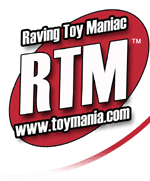|
Pastels have always been used as a
supplement with paint in the coloring of figures and models, usually as a
medium for shading and /or weathering. Pastel dust gives you a smooth, rich
blend of values and colors that is usually attributed to an airbrush, but
without all the hassle associated with the use of that tool. Applying some
pastel dust with a small brush to the underside of a cheek bone or the folds
in a garment can give your figure just the right touch of realism and depth.
While pastels are wonderful when used as an accent on painted surfaces they
don't have to be limited to just that. The technique described here will
enable you to completely paint a figure from the ground up in pastels. The
result will be a richer, more dimensional blend of color and value (light and
dark) with amazing ease. You will really be astonished by what your able to
achieve- blending and shading your figures like a pro!
What you'll need:
-Pastel sticks- a box of basic colors and a box of earth tones (sometimes
called weathering pastels) should be a good starting point. They can be
purchased at any hobby shop or art store. Remember your buying PASTEL (they
look like colored chalk) NOT OIL PASTEL (these look like crayons).
-Spray primer- It is absolutely imperative that you prime the entire area to
be colored in white for this technique. It takes many layers of color to build
to opacity with pastels and a dark primer like a black or gray is just not
going to work.
-Matte spray varnish- I use Testors Dullcoat. My wife uses Citadel Matte
Varnish. It's all a matter of personal preference. The most important thing is
that IT NEEDS TO BE COMPLETELY FLAT! I can't stress this more. Pastel dust
will not stick to ANYTHING that has the slightest gloss to it. Many matte
finishes (like Krylon's version) are not what they claim to be- they're more
like a semi- gloss. If your unsure about what to use stick with the 2 brands
mentioned above and you can't go wrong.
-Exacto knife- for scraping the dust off of the pastel stick
-Mixing cups- for mixing the dust. Some Dixie bathroom cups'll do the trick.
-Old brushes- Pastels wreak havok on your brushes so although you don't want
to be using some paint encrusted piece of crud, you probably shouldn't be
using your brand new $40 Winsor & Newton series 7 #2 sable brush for your
pastel work. Try to have a variety of sizes on hand so that you can be free to
be broad in larger areas as well as dainty in the hard to reach areas.
-Q-Tips- excellent for applying broad base coats of color. The Q-Tips allow
you to really rub the color in and build opaque layers of color up faster.
You'll probably want to get a family sized box as you'll probably burn through
them. Don't skimp either- Q-Tip brand cotton swabs really work best!
-Dust Mask- if your going to be doing a lot of pastel work, you'll probably
want to pick some of these up at your local hardware store. The paper kind
with the little elastic band will do. Without one of these you'll be inhaling
tons of pigment and blowing your nose in rainbows when your done.
-Acrylic paint- you're going to need some of this. After all, your going to
have to paint things like eyes and teeth.
What To Do
First prime your figure thoroughly using a white spray primer. When the figure
is dry and you've made your color selection you can use the exacto knife to
scrape some color off of the pastel stick(s) into a Dixie cup. Pastel color
(like paint) can be used right off the stick or can be mixed with other
pastels to achieve personalized colors. Simply scrape the dust from 2 or more
sticks into the cup and stir it together with a brush.
Begin by dipping a Q-tip into the dust mixture and rubbing it onto the figure.
You want to start light and build the color up adding heavier color to the
areas you want to be shaded and letting a little white show through in the
areas you want highlighted. Don't get discouraged if it looks like nothing is
happening right away. Pastels are about building up layer upon layer of color.
When it looks like the figure isn't getting any darker it's time to spray it.
Take your matte spray coat and generously spray the area that you've pastelled.
When it's dry your ready to begin building the color again. Keep working in
this manner until you've built up a satisfactory opacity (it usually takes
about 4 to 6 coats of spray coat and pastel to achieve the desired result).
Once you have a basecoat of color your ready to begin shading. Add your shade
color to the desired area using brushes or Q-Tips (depending on how large an
area it is) and blend the shade dust into the already sealed basecoat. Go
slowly- sometimes it's difficult to tell at first how drastically colors can
build up at this stage.
Continue like this until the figure is done. Details like eyes and teeth or
hard edges like hairlines and costume details can be painted with acrylics and
shaded with pastels if need be.
Helpful Hints
-Once each layer of color has been sprayed it becomes permanent. Before it has
been sprayed mistakes can simply be wiped off with a finger or a damp brush or
towel.
-Be patient. This technique takes time and lots of layers. Don't be
discouraged if it seems the color isn't taking in the beginning. Spray it and
start the next layer. Whenever it seems like the figure won't take any more
color it's time to spray.
-Be conscious of which areas are going to be shaded and which are going to be
highlighted right from the beginning. Leaving highlighted areas a little
lighter even in the first few layers of color will really give your figure a
natural, 3 dimensional feel.
-Don't be afraid to use paint in situations where pastels are not practical
(eyes, teeth etc.). The strength of this technique lies in the mediums ability
to produce soft, natural gradations of color and shade. It's weakness lies in
it's inability to produce minute, sharp detail. It's perfect for flesh and
drapery, but not so good for hairlines and sharp edged costume details.
-You might gather from the above explanation that you'll be using quite a bit
of spray varnish for this technique and if your using Testors Dullcoat (which
costs twice as much as any other brand for half the amount) it could get
expensive. To alleviate this I sometimes coat the layer generously with Krylon
Crystal Clear Acrylic Coating (which is gloss) and then spray it with the
Dullcoat to kill the shine. If your going to try this make sure that all of
the gloss has been dulled with the Testors before proceeding as pastel dust
WILL NOT STICK TO ANY GLOSSY SURFACE.
|








